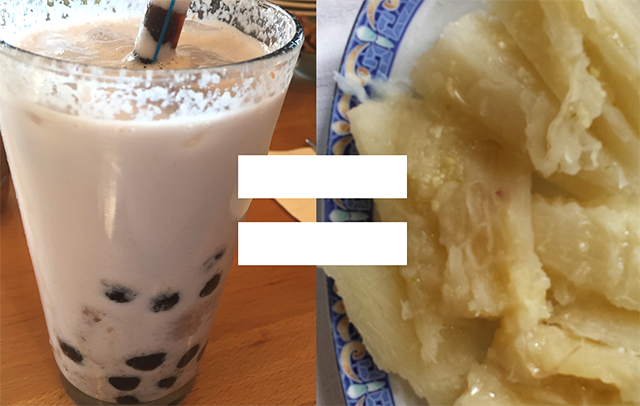Before I could talk, I was eating yuca. In the way that Americans upgrade a fast food meal by adding fries, Cubans add yuca. It’s cheap, filling and thus as central to Cuban food culture as hunger. (It was Cuba’s first commercial crop and thus predates its nationhood.)
Today I live far from the Caribbean city where I first learned the taste of food. The distance can feel absolute. Los Angeles is a “hot pot” of North American, Central American, European and Asian cultures but Caribbean food in general and Cuban food in particular is not really in the mix. At least, not on the surface.
Recently, I’ve begun to drink iced milk teas with boba on an almost daily basis. Invented in Taiwan in the 1980s* and now marketed as bubble teas, boba teas typically come in Asian flavors: Thai, matcha, jasmine, taro†, etc. When I consume boba tea, I feel more like a citizen of LA and less like a native of Cuba.
And yet… it turns out that boba is tapioca and tapioca is cassava and cassava is…
Yuca.
Boba is made out of yuca.

The earth is round. Cultures circulate. Coincidences mulitply.
*so-called “Cuban coffee” is similarly multinational; not just because coffee was first cultivated in Ethiopia and sugar cane in Southeast Asia but because espresso coffee, a process that requires industrial machinery, was invented in Italy in the 1880s.
†Taro is what Cubans call malanga; one of my earliest memories is of eating boiled malanga mash covered in warm milk.
Image of yuca on the right from GoodMotherDiet.com